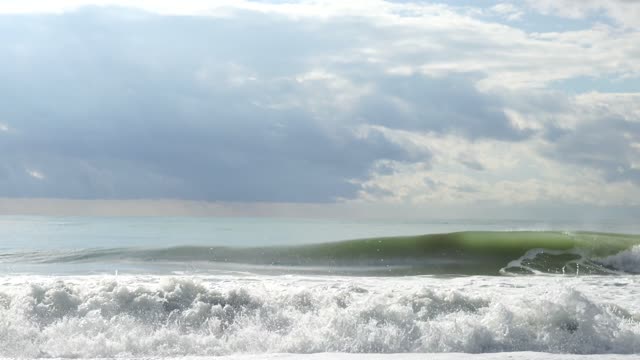Premium Only Content

SEA WAVES
Sea level relates to the vertical change in height of the sea surface, which occurs over all time and space scales. The observed sea level (excluding wind waves) can be regarding as being the combination of tides, nontidal residuals, and mean sea level. Tides are the most predictable and dominant component of sea-level fluctuations in many parts of the world. To fully understand, predict, and categorize them, one must understand both the astronomical forcing that gives rise to them and also the hydrodynamic response of the oceans, to this forcing. The nontidal residual is the part of the sea level that remains once the tidal component has been removed and primarily contains the meteorological contribution to sea level. The most dramatic meteorological sea-level changes occur during storms, when low atmospheric pressure allows sea level to rise and strong winds force water toward the coastline. Mean sea level is the average height of the sea over longer periods of time with the short-term variations associated with tide and storm surges averaged out. The main climate-related factors that are currently causing mean sea levels to rise are: the melting of land-based sources of ice; thermal expansion of seawater; and changes in terrestrial hydrological regimes.
THANKS FOR WATCHING
-
 45:44
45:44
BonginoReport
3 hours agoJoy Behar, Get Your Facts Straight! - Nightly Scroll w/ Hayley (Ep.15) - 03/28/2025
37.3K35 -
 LIVE
LIVE
The Jimmy Dore Show
3 hours agoThe REAL Reason Behind El Salvador Deportations! EU Preps Europeans For Nuclear War! w/ Max Keiser
15,150 watching -
 1:25:30
1:25:30
vivafrei
5 hours agoTrump Endorses Mark Carney? Rubio Lays Out the Visa Law! District of Corruption Strikes Again & MORE
97.3K143 -
 LIVE
LIVE
Dr Disrespect
7 hours ago🔴LIVE - DR DISRESPECT - TRIPLE THREAT CHALLENGE - WZ, PUBG, TARKOV
9,763 watching -
 LIVE
LIVE
Nerdrotic
5 hours ago $8.30 earnedSnow White BOMBS, Marvel Desperation, Amazon Studio Head QUITS! - Friday Night Tights 347
4,828 watching -

2 MIKES LIVE
3 hours ago2 MIKES LIVE #198 Open Mike Friday with guest Danielle Francine!
69 -
 LIVE
LIVE
LFA TV
6 hours agoCanada Aims to Inflict as Much Pain as Possible on Americans | TRUMPET DAILY 3.28.25 7PM
256 watching -
 10:21
10:21
Tactical Advisor
3 hours agoThe Gun You NEVER Thought You Needed | Volquartsen ENV
2511 -

The Amber May Show
6 hours ago $0.17 earnedWhat They Did To Survive Late Stage Breast Cancer| Tom Renz
6.66K1 -
 8:41
8:41
ARFCOM News
3 hours ago $0.19 earned😍 Kash Patel LOVES The ATF 😍 | Here's Why Vanderstok Isn't A Catastrophe | Veto Record !!!
4.31K1